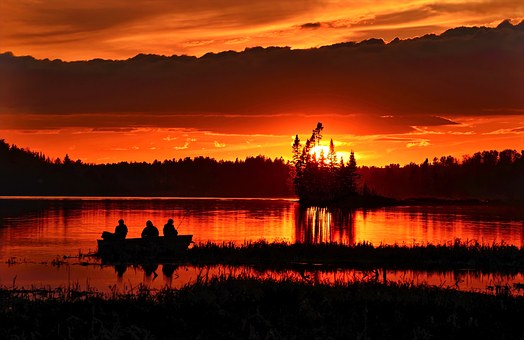“There are certain interests and rights vested in the shore owner which grow out of his special connection with such waters as an owner. These rights are common to all riparian owners on the same body of water, and they rest entirely upon the fact of title in the fee to the shore land.”
– Justice Leroy E. Matson –
Minnesota Supreme Court
Every person who purchases a lake lot does so with the expectation of exercising the “riparian rights” that come with owning lakeshore property. But what are these “riparian rights”? They are not spelled out in the purchase agreement or in the deed for the property. Riparian rights are those rights inherent to the ownership of shoreline that permit the owner to use and enjoy the water. The right to “use and enjoy water” means the right to make use of a lake over its entire surface. But that use must be reasonable. It cannot interfere with the exercise of similar rights on the part of the other abutting owners who share riparian rights.
Of course a lake lot owner’s riparian rights, no matter how seemingly reasonable, are not limitless. A landowner’s riparian rights are still subject to state regulation, which is promulgated by the Minnesota Department of Natural Resources, which, in turn, often defers at least some authority to the local branches of government.
It is difficult, if not impossible, to identify every use of the water that could be deemed “reasonable.” We know it is reasonable, for example, to boat, hunt, and fish. Important to many lake owners, it is also reasonable to install a dock and watercraft lift long enough to reach navigable water depths, so long as the dock and/or watercraft lift do not constitute a hazard to navigation or public health, safety, and welfare. It is likely to be considered an “unreasonable” use if the design and location of your dock extends in front of your neighbor’s beach. To state the obvious, the best practice is to install docks and boat lifts so that mooring and maneuvering of watercraft can normally be confined within the property lines as if they were extended into the water.
Like many land-related rights, it is possible to separate the riparian rights and sell or assign them independently of the land to which those rights are attached. But even the right to sell riparian rights is limited; many counties (including Crow Wing County) restrict the right to provide access to public waters for non-riparian owners through a riparian lot. It is possible, but difficult. Normally, the public’s only access to a lake is if the public owns land adjacent to the lake.
If the public owns land that abuts a lake, such as a beach, a mutual right of enjoyment is shared by riparian owners and the public generally. On a public lake, therefore, the private owner has no more right to the recreational benefits such as boating, hunting, and fishing on that lake than does the general public. A common mistaken belief is that the State of Minnesota owns a strip of land around all Minnesota lakes for public use, making all lakes accessible to the public. Much to the relief of all lakeshore owners, this is absolutely false. Like all property, lakeshore is either privately or publicly owned and the general public can access water bodies or watercourses only through public property, not through private property. And, like all property, those unaware individuals who enter private property without permission from the landowner are trespassing and may be prosecuted under the state trespass laws.

